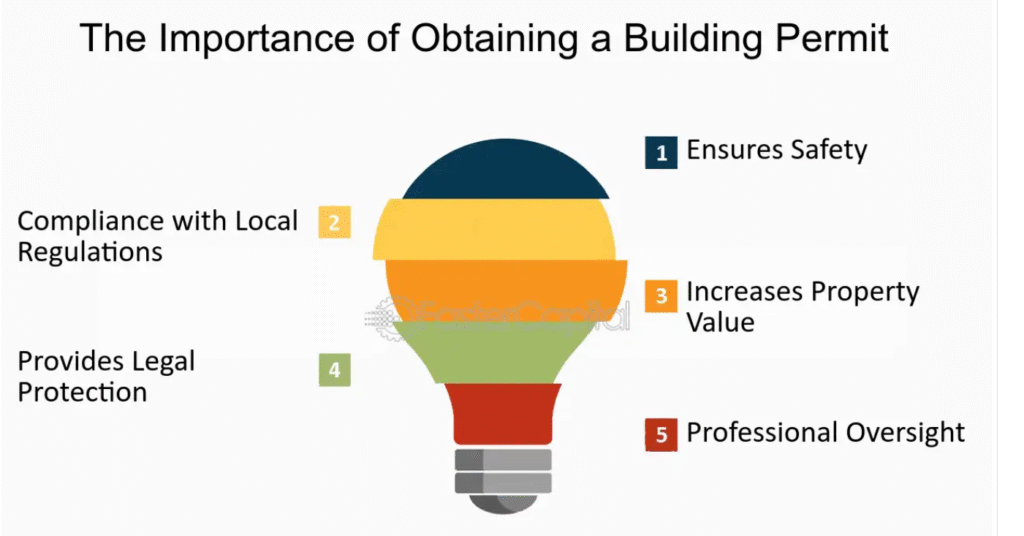Contractors know the drill all too well. You lock in a bid based on last year’s numbers only to hit a wall when new codes demand pricier materials or extra permits. Suddenly, your $800000 warehouse jumps 12% from unforeseen compliance tweaks and timelines stretch by weeks. Clients fume profits shrink, and your crew idles on site. These regulatory shifts aren’t just paperwork. They’re budget killers that hit hard in an industry already squeezed by tight margins. But smart estimating turns this chaos into control. By factoring in changes early, you protect cash flow, win bids and finish strong. This guide breaks down the big shifts, the pains they cause, and real steps to adapt so your next project stays profitable.
Regulatory Changes in Construction
Regulatory updates shape every nail hammered and beam poured. In 2025, building codes, environmental rules and safety standards evolve fast, driven by climate pushes and tech advances. The International Code Council rolled out the 2024 editions, prioritising energy efficiency and resilience against storms. States like California tightened lead exposure limits under Cal/OSHA, while Maryland hiked fines for work-zone speeding to deter risks. Nationally, the NEPA revisions streamline reviews but demand deeper environmental scans for big infrastructure.
These aren’t distant threats. They ripple through projects, raising material needs like low-carbon concrete or adding labour for safety checks. A Dodge Data report notes compliance costs climbed 8% last year alone, pushing average overruns to 15%. For contractors juggling residential flips or commercial towers, this means rethinking budgets mid-stream. But staying ahead pays off. Firms adapting early cut delays 20% and boosts client trust. Tools like digital trackers help monitor shifts so you bid with eyes wide open. Ignoring them invites fines up to $15000 per violation or halted work. Proactive planning makes regulations a hurdle, not a halt.
Common Regulatory Changes Affecting Construction Estimates
Changes hit fast and wide, from local zoning tweaks to federal mandates. Each one tweaks your bottom line, forcing estimate adjustments that catch many off guard. Here’s a rundown of the main ones shaking up 2025 bids.
Energy Efficiency Mandates
The 2024 IECC pushes electrification and renewables like solar tie-ins for commercial builds. Expect 5-10% higher upfront costs for panels or efficient HVAC, but the return is offset by 20% long-term. A Florida condo project added $45000 for compliant wiring alone.
Environmental and Sustainability Rules
Stricter EPA guidelines require low-emission materials and waste tracking. NEPA updates demand impact studies for sites over 5 acres, adding $20000-50000 in surveys. Green mandates in LEED projects spike recycled steel use by 15% hiking initial outlays.
Safety and Health Standards
OSHA’s heat rule proposes protections like shaded breaks in hot zones, cutting productivity by 10% during peaks. Cal/OSHA’s lead limits mean specialised gear and testing bumping labor 8%. Fines doubled in some states for violations.
Resilience Codes for Weather
Post-hurricane updates in ASCE 7-22 demand tornado-rated roofs and flood elevations. High-velocity zones like Florida require ICC 500 testing, adding 7% to framing costs. A Texas bridge bid rose $120,000 from debris impact provisions.
Labour and Wage Laws
FLSA tweaks raise overtime thresholds, and union rules demand certified training. California’s AB 1820 speeds fee transparency but delays permits 30% if non-compliant.
Zoning and Permitting Shifts
AB 2729 extends approvals 18 months, but new tools for fee estimates in big cities add admin time. Flood-resistant rules expand below elevations, requiring elevated foundations up to 12% in costs.
These shifts vary by state but average 10-15% estimate bumps per project. A Midwest firm saw a school build climb 9% from seismic bracing under the 2024 IBC. Track them via ICC alerts or state sites to avoid blindsides.

Challenges These Changes Present for Estimating and Budgeting
Regulatory flux turns solid plans to sand. One day, your bid looks tight, the next a code update demands redesigns that eat margins. Contractors waste hours chasing variances while crews wait. Here’s how these hurdles bite.
Cost Volatility from Material Swaps
New eco-rules force pricier sustainable options like low-VOC paints up 18%. Estimating misses this and budgets overrun 12% on average per RSMeans data.
Timeline Delays and Productivity Hits
Permitting snags from NEPA stretch approvals 40% longer. Safety protocols like heat breaks slow pours by 15% in summer, risking $50000 weekly idles.
Compliance Overheads
Training for OSHA changes costs $2000 per worker yearly. Fines for non-compliance average $14000 per incident, draining contingency funds.
Scope Creep and Redesigns
Zoning tweaks mid-project trigger change orders, adding 8-10% to scopes. A warehouse in Maryland faced $30000 extras from speed-zone barriers.
Risk of Underbidding
Outdated estimates ignore 2024 IECC electrification, pushing bids 7% low. Underbidding simply means losing projects.
Cash Flow Strain
Upfront tests for environmental scans tie up $25000 before groundbreaking. Labour shortages from certification needs hike rates by 10%.

How Accurate Estimates Account for Regulatory Impacts
Precision in estimating isn’t luck. It’s a method. Bake in regs from day one to shield against shocks. Start with scope reviews, pulling the latest codes from ICC or state portals. Factor 5-15% contingencies for unknowns like NEPA scans.
Breakdowns by trade help. For electrical estimating, add wires for smart meters under IECC. Use software like Bluebeam for auto-updates on material swaps. BIM models clash-check compliance early, slashing rework by 20%.
Track variances weekly against budgets, catching 3% drifts from zoning shifts. Real-time data from suppliers flags eco-material hikes. A study shows accurate bids with reg buffers finish 25% under projections.
For construction compliance, this means permits in scopes, not add-ons. Simulate scenarios like flood elevations to test costs. Clients see transparency, earning 30% more loyalty. Skip this, and 80% overruns loom per Procore stats.
Tips for Managing Regulatory Impacts on Construction Budgets
Stay ahead of the curve with these steps. They turn threats into tools for tighter control.
Monitor Updates Proactively
Subscribe to ICC newsletters and state alerts. Review quarterly, adding 2-5% to bids for pending changes.
Build Robust Contingencies
Allocate 10-15% for regs like OSHA training. Use historical data to size buffers, e.g., 7% for coastal resilience.
Leverage Tech for Tracking
Adopt apps for code libraries and auto-adjustments. BIM spots HVAC tweaks under IECC, saving 12% on redesigns.
Partner with Experts Early
Consult compliance pros during planning. They flag zoning snags, cutting permit delays by 35%.
Diversify Suppliers
Lock quotes for green materials before hikes. Relationships yield discounts on recycled steel.
Document Everything
Log changes for audits proving compliance. This speeds approvals by 20%.
Review Post-Project
Analyse overruns to refine future estimates. One firm cut reg hits 18% this way.
These moves shield 70% of risks per industry benchmarks. A Texas builder buffered for ASCE wind loads, saving $95000 on a school.
How ALM Estimating Keeps You Ahead of Regulatory Changes
New building codes or environmental rules can throw your bids off, costing thousands in overruns or lost jobs. ALM Estimating stops this chaos cold. With 20+ years of expertise, they weave the latest regulations into every estimate, ensuring you stay compliant and profitable. Here’s why contractors trust ALM to beat regulatory hurdles and win.
Real-Time Code Tracking
ALM monitors ICC and OSHA updates daily, catching 2024 IECC or NEPA shifts early. On a $3 million office, they flagged solar rules, saving $50,000 in overruns.
Fast Bid Updates
Get revised estimates in 24-48 hours for zoning or safety tweaks. A $2 million bridge avoided $40,000 flood extras with its quick resilience buffers.
State-Specific Know-How
Licensed pros nail local rules like California’s lead limits, saving a school project $30,000 in fines.
Live Pricing Tools
Cloud systems adjust for material hikes like 8% concrete spikes, keeping bids sharp. Saved a warehouse $20,000 on green roofing.
Always-On Support
24/7 help tweaks bids for mid-project changes, cutting delays 25%. Visual reports boost client trust by 30%.
ALM Estimating delivers estimate adjustments for construction compliance that win jobs and protect margins. Don’t let regulations derail you. Partner with ALM Estimating for bids that keep you ahead.

Conclusion: Shield Your Projects from Regulatory Shifts Now
Regulatory changes test every contractor’s grit. From IECC electrification to OSHA heat rules, they spike costs, delay timelines and strain budgets. Accurate estimates with buffers and tech turn pains into profits. Don’t wait for the next code drop to scramble. Act today, team up with experts like ALM Estimating for construction estimate adjustments that keep you compliant, competitive and cash-positive.
Overwhelmed by 2025 code tweaks eating your margins?
Facing NEPA delays stalling your site?
Schedule with ALM Estimating today to integrate compliance buffers and hit deadlines fast. Get a discount of 30% on your first estimate.
FAQs:
Q1. How do the 2024 IECC energy rules impact affordable roofing estimates for contractors?
A. They mandate efficient underlayment and solar-ready designs, adding 6-9% to material costs. Buffer bids with real-time trackers to offset via rebates, cutting long-term expenses 15%. Firms that adapt early win 25% more green projects.
Q2. What challenges do environmental regulations pose for construction budgeting?
A. NEPA scans add $25000 upfront for impact studies, delaying starts by 30%. Scope creep from waste rules hikes labour 10%. Proactive audits and supplier ties mitigate 70% of hits, keeping cash flow steady.
Q3. Why track building code updates quarterly in estimating?
A. 2024 IBC seismic tweaks can bump framing 8% unspotted. Regular reviews flag changes early, slashing overruns 18%. Use ICC portals for alerts, ensuring bids stay 95% precise.
Q4. How can zoning regulations cause estimated adjustments mid-project?
A. AB 2729 extensions help, but new fee tools demand redesigns, adding 5-7% to scopes. Document approvals upfront to speed tweaks, avoiding 20% delays in permits.
Q5. What role does BIM play in regulatory compliance for estimates?
A. It models code clashes like HVAC under IECC, saving 20% on rework. Auto-updates quantities for resilience rules, boosting accuracy to 98% versus manual 80%.
Q6. How do OSHA safety changes affect labor costs in budgets?
A. Heat rules cut peak productivity by 12% raising overtime 8%. Train crews yearly and build 5% buffers to comply without fines up to $15000 per violation.
Q7. Can small contractors manage regulatory impacts without big teams?
A. Yes, software like Bluebeam tracks updates for $200 monthly. One accurate bid recovers costs by avoiding $30000 waste from overlooked flood elevations.
Q8. What overrun risks come from ignoring construction compliance?
A. 70% of projects exceed 15% from unspotted regs per studies. Fines and delays compound to $50000+ hits proactive buffers drop this to 3%.
Q9. How fast can estimates adapt to new environmental laws?
A. With real-time tools, 24-48 hours for NEPA tweaks. Simulate impacts early to adjust bids without halting scopes, saving 14% on eco-mandates.
Q10. Do client stories show value in regulatory-focused estimating?
A. A Florida roofer saved $22000 on hurricane codes via buffer landing resort work. Such wins build 30% referral boosts, proving compliance pays dividends.
